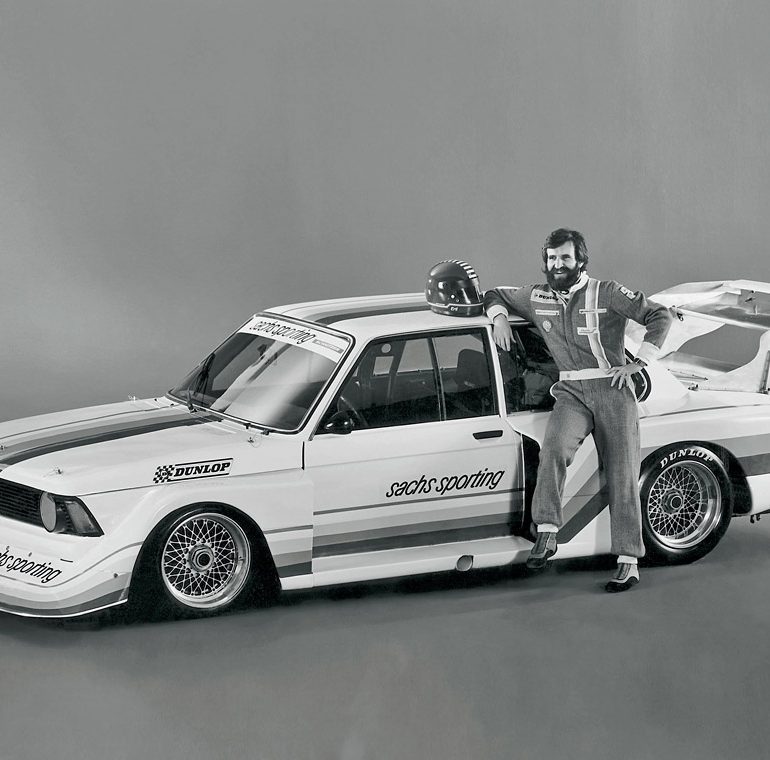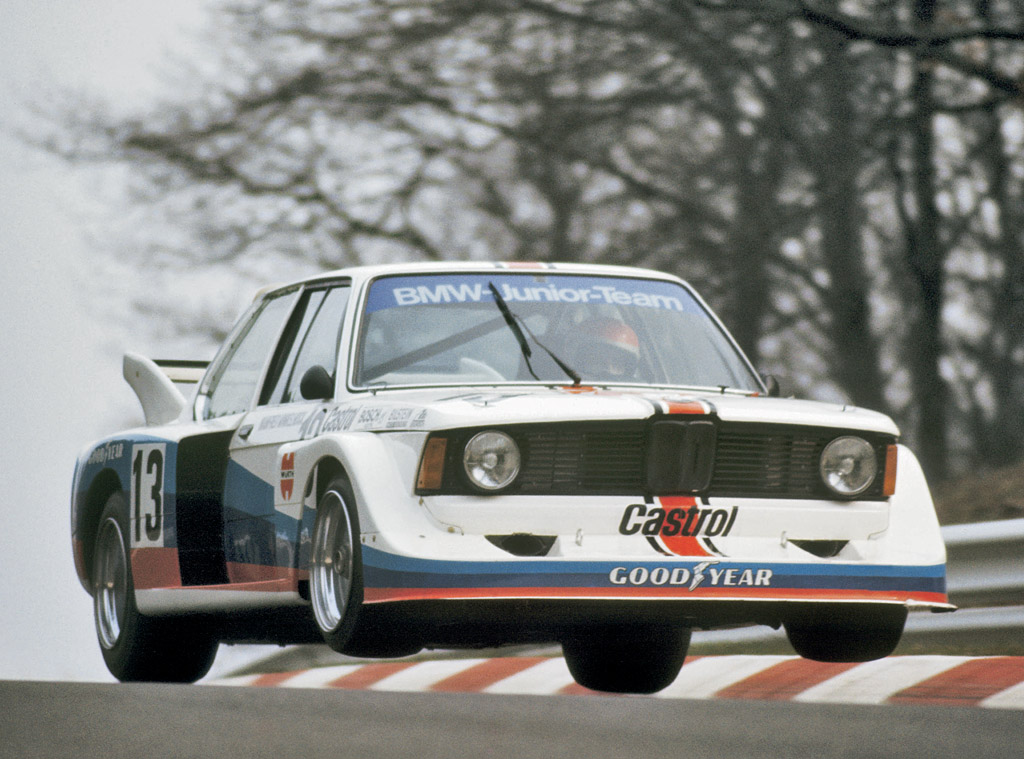1978 BMW 320 Turbo Group 5
When the BMW 320 made its race track debut in 1977, it did so in the same striped livery of BMW Motorsport GmbH (founded in 1972) that also distinguished the 3.0 CSL Coupés which had caused such a sensation on international racing circuits in the early 1970s. As Group 5 racing tourers, the BMW 320 models also cut a dash with their heavily flared wheel arches and large front spoiler and rear wings. Underneath the bonnet nestled a thoroughbred BMW Formula 2 racing engine, a 2-litre in-line four-cylinder unit that packed 300 bhp. Needless to say, such power could only be translated to the road with the help of a racing chassis and all-round aerodynamic assistance.
But it wasn’t just the car and its technology that were spectacular: the drivers at the wheel of the three BMW works cars also created a stir on and off the race track. Known as the BMW Junior Team, the three up-and-coming drivers Eddie Cheever, Marc Surer and Manfred Winkelhock were a trio of hot-blooded young talents who took on the established competition in the German Motor Racing Championship. At the time, this event was a showcase for the worldâs best touring car drivers and works teams. Yet the BMW Junior Team, who would rise to ever-higher challenges in this series, were mixing it with the front-runners right from the start.
A total of 28 Group 5 BMW 320i units were built in 1977/78. BMW Motorsport GmbH delivered the touring cars as sport kits to racing teams around the world. In 1978, BMW cleared the track in the German Motor Racing Championship for the tuners and private teams, as the Junior Team (the first systematically run junior promotion scheme by a manufacturer in motor racing) were now contesting the European Formula 2 Championship. They proved very successful in this too, with the March BMW 782 dominating the season. Bruno Giacomelli, who had replaced Cheever, took the European Championship title ahead of his team-mate Marc Surer.\
With a good deal of courage and the concentrated power of the 2-litre turbo engine in the BMW 320i, BMW Motorsport GmbH fielded a touring car against the flat sports racers in the World Championship of Marques: Gilles Villeneuve and Eddie Cheever took the chequered flag in the Six Hour Race at Canadaâs Mosport circuit. The following year also saw customer teams competing, with BMW winning the 2.0-litre class in all seven races of the World Championship: Dieter Quester and Derek Bell in Mugello, Harald Grohs and Eddie Joosen in Silverstone, Ronnie Peterson, Hans-Joachim Stuck and Markus Höttinger in the 1000 km of the Nürburgring, Harald Grohs again, this time with Patrick Nève, in Misano, the Duo Infernale of Dieter Quester and Hans-Joachim Stuck in Watkins Glen and, finally, to round off the season, Marc Surer with Freddy Kottulinsky in the Six Hours of Vallelunga. BMW concluded the World Champion of Marques as winner of the 2-litre class with the optimum number of points: with its 320i the company had provided conclusive evidence of the sporting aspirations of the 3 Series range.
Following a realignment of the displacement classes in the European Touring Car Championship and BMWâs entry into Formula One, BMW Motorsport initially turned its focus on the over 2500 cc class, in which the BMW 5 and 6 Series were to rake in one win after another. The 3 Series was somewhat overshadowed by its larger siblings, but not for long. A new model based on the second 3 Series (E30) would soon emerge to become the most successful touring car of all times.
Story by BMW
In Detail
| tags | e21, 3er |
| submitted by | Richard Owen |
| built at | Munich, Germany |
| engine | Inline-4 |
| position | Front Longitudinal |
| aspiration | M12 Turbocharged |
| displacement | 2000 cc / 122.0 in³ |
| bore | 89.2 mm / 3.51 in |
| stroke | 80 mm / 3.15 in |
| power | 447.4 kw / 600.0 bhp |
| specific output | 300.0 bhp per litre |
| bhp/weight | 683.37 bhp per tonne |
| front brakes | Vented Discs w/4 Piston Calpers |
| rear brakes | Vented Discs w/4 Piston Calpers |
| front wheels | F 40.6 x 27.9 cm / 16.0 x 11.0 in |
| rear wheels | R 48.3 x 35.6 cm / 19.0 x 14.0 in |
| steering | Rack & Pinion |
| curb weight | 878 kg / 1936 lbs |
| length | 4509 mm / 177.5 in |
| width | 1829 mm / 72.0 in |
| height | 1372 mm / 54.0 in |
| transmission | Getrag 5-Speed Manual |







